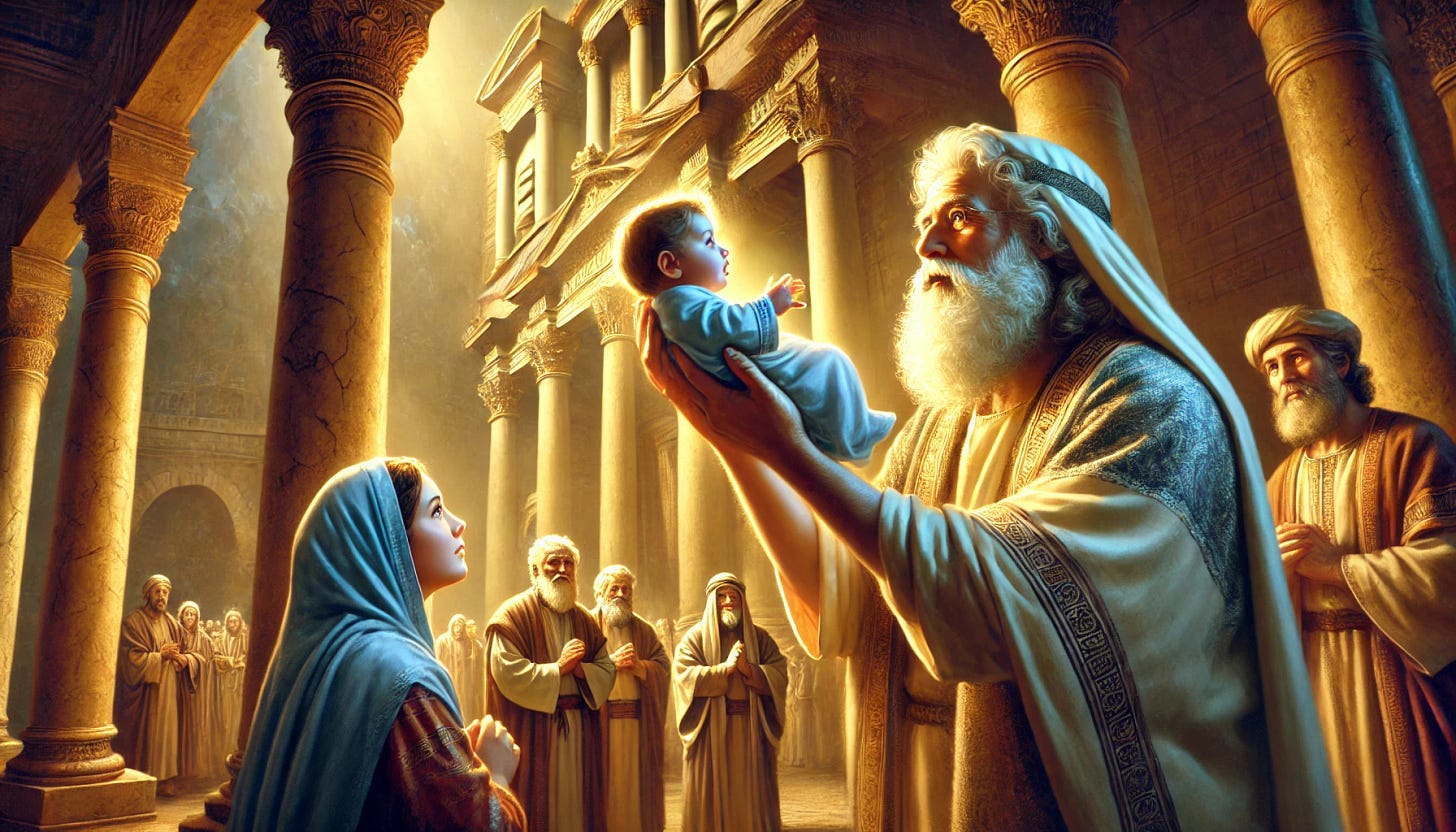How Simeon’s faith challenges us today
Are we actively and eagerly (and patiently) awaiting the movement of the Holy Spirit?
This sermon was given by the Rev. David Libbon at Good Shepherd Anglican Church in Cornelius, North Carolina, on Feb. 2, 2025.
You can view the sermon here, starting 22:30 into the service.
The text for today was Luke 2:22-40, Jesus Presented at the Temple.
In this passage, Luke introduces us to Simeon, a man described as “righteous and devout” — a faithful Jew eagerly awaiting the arrival of the Messiah.
Verse 26 reveals a remarkable promise: the Holy Spirit had assured Simeon that he would not die before seeing the Christ.
Pastor David noted that Simeon was a man of waiting.
But Simeon wasn’t just waiting passively. He was actively seeking God, living righteously, and responding to the Spirit’s guidance. When the moment came, he was ready to recognize and embrace Jesus as the Messiah.
David then challenged us: How are we living out a faith that points to Christ?
To illustrate, he shared one of his favorite metaphors — tall ships with massive sails. Just as these ships rely on the wind to move, we too must set our sails in faith, ready to be moved by the Spirit when God’s timing arrives.
“The active pursuit of Christ — our devotion — is putting out the sails on these great sailing ships of our lives and letting the wind of the Holy Spirit fill them and move us forward.
“That moves us to do things like plant churches, to love the least and the lost, to care for our neighbors. It moves us.
“What does it look like for you to be devoted in your life, to put up those kinds of sails, and to let the Holy Spirit fill them and move you?”
This passage might seem unfamiliar to us as 21st-century Christians, but when we unpack the Jewish traditions behind it, the Scripture comes alive with meaning.
The Presentation of Jesus at the Temple
Luke 2:22–24 refers to the purification of Mary and the presentation of Jesus at the temple, not His circumcision.
Circumcision takes place on the eighth day after birth, while the presentation at the temple occurs 40 days after birth.
According to Jewish law, a woman who gave birth was ceremonially unclean. After 40 days for a male child (80 for a female), she was to offer a purification sacrifice at the temple. Mary, as a devout Jew, followed this law.
The Law (Exodus 13:2, 12–15) required that firstborn sons be dedicated to God, recalling how God spared Israel’s firstborn during the Exodus. Parents would present the child at the temple and likely pay a redemption price (Numbers 18:15–16).
The required purification sacrifice was usually a lamb and a bird (Leviticus 12:6), but if a family was poor, they could offer two birds instead (Leviticus 12:8). Mary and Joseph offered “a pair of turtledoves or two young pigeons,” indicating their humble status.
This is a foreshadowing of Jesus’ role. Jesus, the true Lamb of God, was consecrated to God from birth.
The Songs of Luke
The Gospel of Luke is often called the most musical of the Gospels because it includes four songs in its opening chapters. These songs — often called “canticles” — are poetic hymns of praise, joy and prophecy.
The four songs are:
The Magnificat (Luke 1:46–55) — Sung by Mary after her visit to Elizabeth.
The Benedictus (Luke 1:68–79) — Sung by Zechariah after the birth of his son, John the Baptist.
The Gloria in Excelsis (Luke 2:14) — Sung by the angels to the shepherds at Jesus’ birth.
The Song of Simeon or The Nunc Dimittis (Luke 2:29–32) — Sung by Simeon when he sees the infant Jesus at the temple.
These songs emphasize Luke’s themes of joy, salvation, and the fulfillment of God’s promises through Christ.





